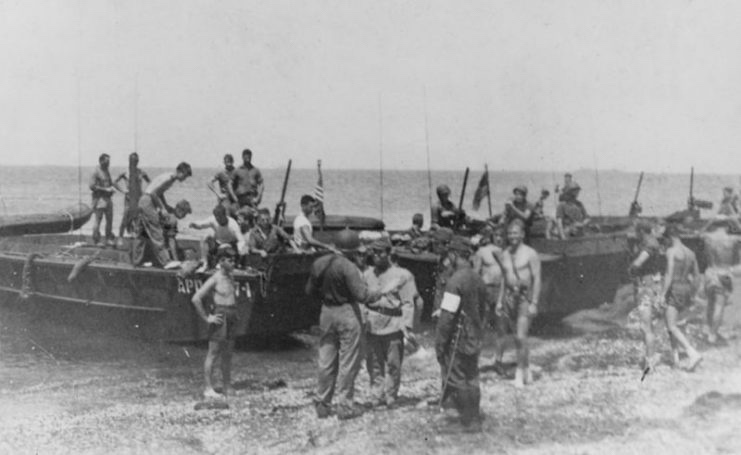There were two theaters of operation during World War II; one was the European Theater of Operation (ETO), where the allies fought against mainly Italy and Nazi Germany, and, on the other side of the world, was the Pacific Theater of Operations (PTO) where the U.S. and her allies were fighting the Empire of Japan. The Battle of Okinawa was one of the bloodiest and most violent battles of the Second World War, and it was also one of the most significant. The battle started on 01 April 1945 and lasted until 22 June 1945. Okinawa was the last stop on the Allied island-hopping campaign before reaching their ultimate target on mainland Japan. The U.S. suffered over 50,000 casualties in the battle, which was one of the main reasons Truman resorted to dropping the two Atomic bombs that ended the war in the Pacific.
www.historynet.com/battle-of-okinawa-operation-iceberg
However, a smaller island had to be taken first and might have played just as significant a role in ending the war.
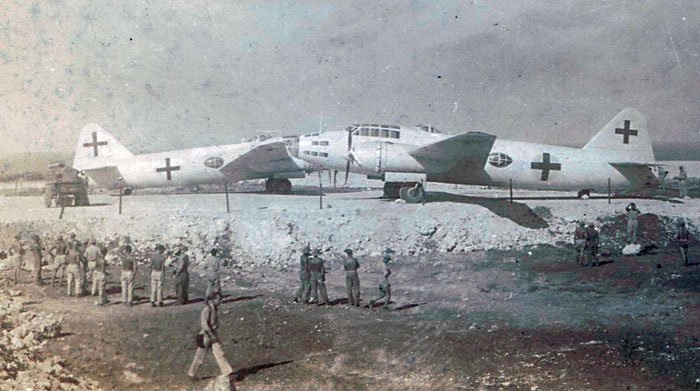
Okinawa is a chain of islands, and one of them, the island of Le Shima (now called Ie Jima), had a significant airfield on it that the U.S. needed as a staging point for the planned invasion of Japan. There was a five-day battle for this island from 16-21 April. It is the battle where a Japanese machine gunner killed famed WWII war reporter Ernie Pyle. However, there is another significant reason this island should be acknowledged: it hosted the first Japanese unconditional surrender delegation. Most people are familiar with the recorded Japanese surrender aboard the USS Missouri on 07 September 1945 in Tokyo Bay.
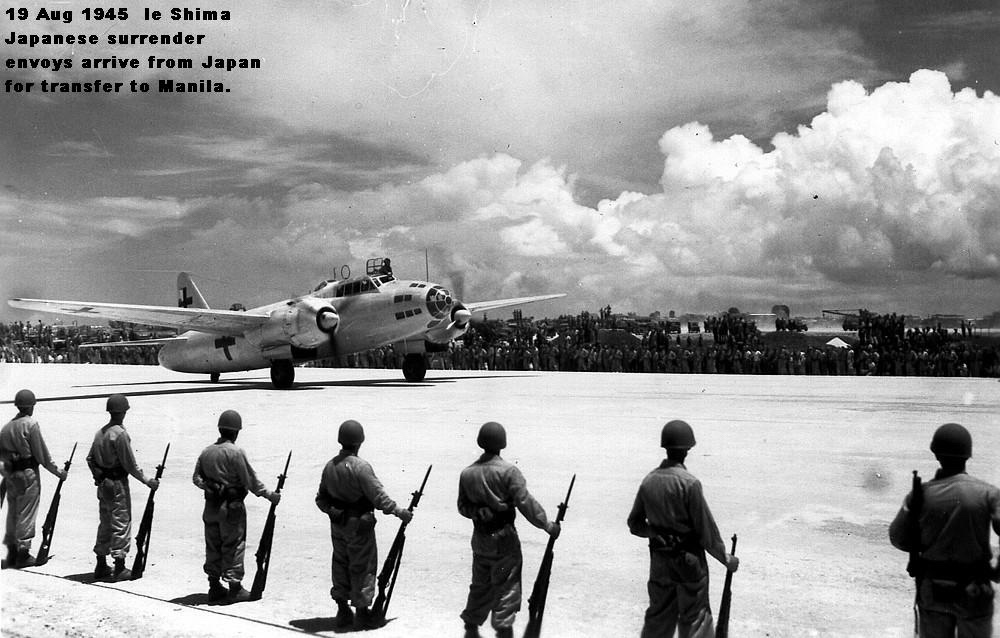
But there was an initial meeting on Le Shima that most people do not know about, where the Japanese delegation arrived on the island around noon on 19 August 1945 on two “Betty” bombers (Mitsubishi G4M-1). They flew in specially marked planes painted white with big green crosses painted on them. They were escorted by the U.S. Army 345th Bombardment Group, who flew out in two American B-25J Mitchell bombers (an updated version of the same planes used to bomb Japan on Doolittle’s raid). The U.S. also had several Lockheed P-38 Lightning from the 80th Fighter Squadron who shadowed them.
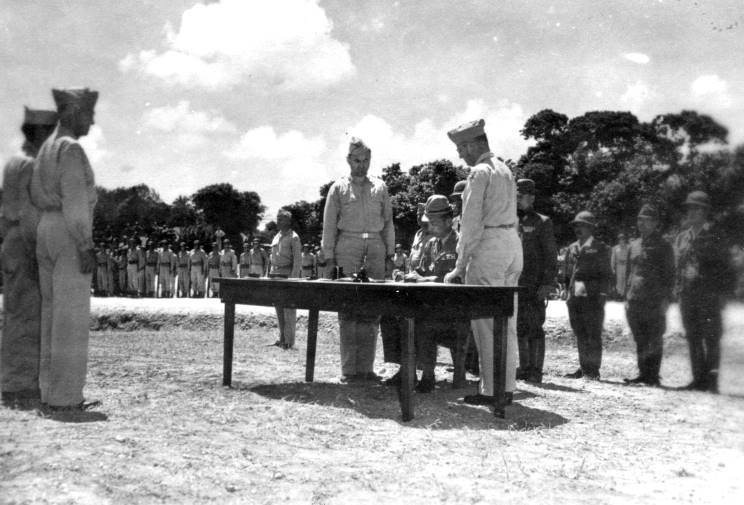
A delegation of 16 military and civilian officials disembarked from the two bombers and met under the wing of the American C-54 Skymaster transport aircraft in the shade. The island’s American commander briefed them on their upcoming flight to the Philippines to negotiate with General Douglas MacArthur’s staff and other allied military representatives.
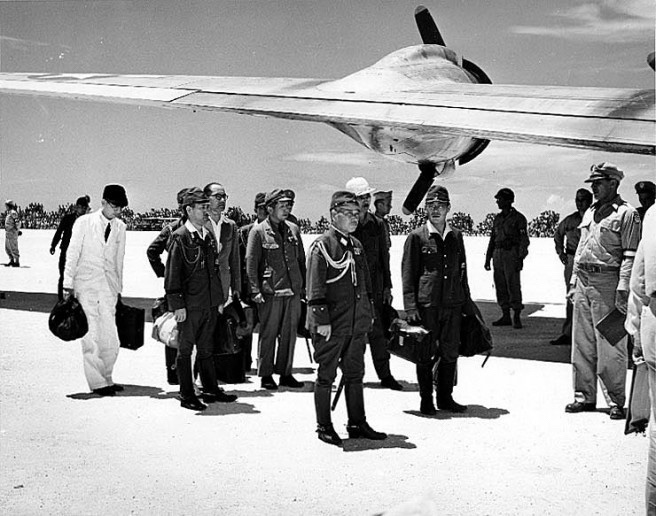
For the trip to Manila, the Japanese delegation boarded a C-54; when they landed, they were given the terms for their formal surrender and the conditions for the Allied occupation of the Japanese homeland. The two Betty crews were detained on the island overnight before the surrender delegation returned the next day from Manila and flew back to Japan.
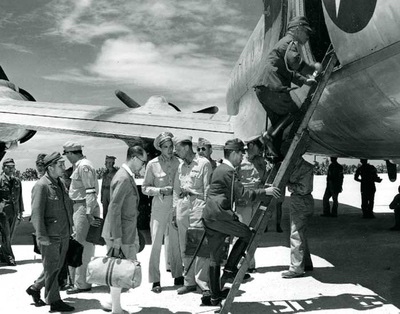
One last note about the surrender, yet significant, was to Lt. Commander E. P. Clayton, Commanding officer of Underwater Demolition Team (UDT) 21 (Now SEAL Team FOUR), to whom a first surrender was made. Cdr. Clayton and his men were the first troops to land on mainland Japan. In the photo below here, he is seen accepting the sword of a Japanese Major. The latter was the commander of the coastal artillery battery at Cape Futtsu near the entrance of Tokyo Bay, across from the Yokosuka Naval Base, in an informal surrender ceremony on 29 August 1945. It was considered the first official surrender on the Japanese main island. A few hours later, the Japanese soldiers at Cape Futtsu marched out onto their parade ground in immaculate uniforms, opened ranks, and laid their rifles on the ground to surrender to UDT 21. Tears were running down their faces.
When Clayton returned to his ship, he was ordered by MacArthur to return the sword. Old Doug didn’t want anyone else to accept the Japanese’s surrender but him, and, like always, he had to have it on camera. (Yes, it was also protocoled that Doug should receive the first surrender.) At that point, Clayton was forced to return the sword to the Japanese Major, and they were told to surrender to the U.S. Marines the next day when they came ashore.
